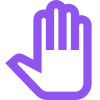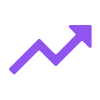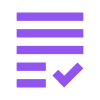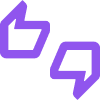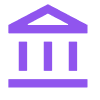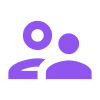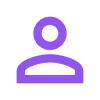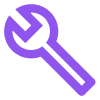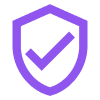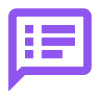In this blog, we take a closer look at the important field of Human Resource Management (HRM). HRM is the strategic approach to managing an organizations workforce to optimize performance and achieve goals. We examine the essential role of HRM in an organization, highlighting key processes and responsibilities such as recruitment, training, performance appraisals and labor relations. We also discover commonly used tools and technologies that support HR professionals to perform their tasks efficiently. Discover how the Learned platform combines the functionalities of various HR tools to work in a data-driven way to build the best performing teams.
What is Human Resource Management?
Human Resource Management (HRM) is the strategic approach to managing an organization’s workforce to optimize performance and achieve organizational goals. It includes various activities, including recruitment, training, performance reviews, employee engagement and conflict resolution. HRM aims to align employees’ skills and talents with company goals, promote a positive work culture and ensure compliance with labor laws. Effective HRM improves employee satisfaction and productivity, which ultimately contributes to the overall success and sustainability of the organization.
What is the role of Human Resource Management in an organization?
Just about everything involving employees in the organization involves the role of human resource management. Whether it’s day-to-day operations, or just long-term strategic projects, HR thinks about everything. To give you a better idea of exactly what the role entails, we have listed the main processes for you.
- Recruitment and Selection: HRM is responsible for attracting suitable candidates for open positions and selecting the best qualified candidates.
- Training and development: HRM organizes training and development programs to improve employees’ skills and competencies and help them grow in their careers.
- Performance management: HRM establishes systems for evaluating employee performance and provides constructive feedback and rewards based on performance.
- Employee engagement: HRM works to promote a positive work culture, team building and ensure employee satisfaction.
- Compensation and Benefits: HRM manages the salary structure and fringe benefits to provide fair and competitive rewards to employees.
- Labor relations and labor law: HRM ensures that the organization complies with labor law regulations and handles labor relations issues, such as conflicts and labor disputes.
- Personnel Administration: HRM is responsible for maintaining personnel files, processing salaries and other administrative tasks related to personnel.
- Strategic planning: HRM plays a strategic role in determining the long-term goals of the organization and how the workforce can contribute to achieving these goals.
In summary, HRM helps attract, retain and develop the organization’s human capital to improve overall performance and effectiveness and achieve organizational goals.
What are common tools used in Human Resource Management?
You might already imagine, but with this range of processes, the HR department is also used to working with different types of software tools. These can be tools for attracting talent, for example, or just developing it. Here are some examples.
- Applicant Tracking System (ATS): An ATS simplifies and streamlines the hiring process by managing applications, screening resumes, tracking candidate information and scheduling interviews.
- Human Resource Information System (HRIS): An HRIS is an integrated system that manages all HR-related data and processes in one place, such as personnel records, payroll, leave requests and performance reviews.
- Learning Management System (LMS): An LMS is used to manage and deliver training and development programs to employees, including tracking progress and performance.
- Performance Management Software: These tools support the process of setting goals, evaluating performance and providing feedback to employees.
- Employee Engagement Survey Software: These tools allow organizations to conduct surveys and feedback collection to measure employee engagement and satisfaction.
- Payroll Software: This software automates the process of payroll calculations, tax withholdings and payroll administration.
- Time and Attendance Tracking Systems: These tools help track employee hours and attendance, which is essential for payroll calculations and compliance with labor laws.
- Talent Management Software: This includes tools for talent recruitment, succession planning, and identifying and developing high-potential employees.
- Employee Self-Service Portals (ESS): ESS systems give employees access to their personal information, paychecks, leave records and other HR-related information.
- Data Analytics and Business Intelligence Tools: These tools are used to analyze HR data and gain valuable insights, such as on turnover, performance, and workforce planning.
Combine the functionalities of the best HR tools in the Learned platform
With Learned’s Talent Management Platform, you have the tools and resources to work in a data-driven way to build best-performing teams. Thus, we combine tools for performance management, learning&development, engagement and more. By turning these add-ons on and off yourself, you tailor the platform to the needs of your organization.
